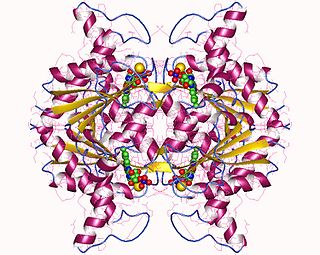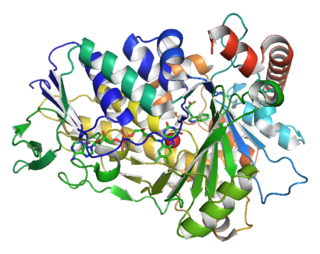| FAD reductase (NADH) | |||||||||
|---|---|---|---|---|---|---|---|---|---|
| Identifiers | |||||||||
| EC no. | 1.5.1.37 | ||||||||
| Databases | |||||||||
| IntEnz | IntEnz view | ||||||||
| BRENDA | BRENDA entry | ||||||||
| ExPASy | NiceZyme view | ||||||||
| KEGG | KEGG entry | ||||||||
| MetaCyc | metabolic pathway | ||||||||
| PRIAM | profile | ||||||||
| PDB structures | RCSB PDB PDBe PDBsum | ||||||||
| |||||||||
FAD reductase (NADH) (EC 1.5.1.37, NADH-FAD reductase, NADH-dependent FAD reductase) is an enzyme with systematic name FADH2:NAD+ oxidoreductase. [1] This enzyme catalyses the following chemical reaction
- FADH2 + NAD+ FAD + NADH + H+
The enzyme from Burkholderia phenoliruptrix has a preference for FAD.






